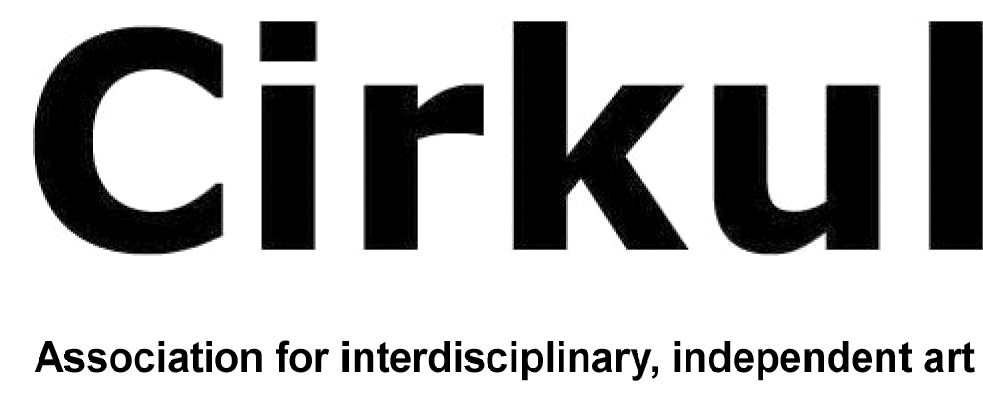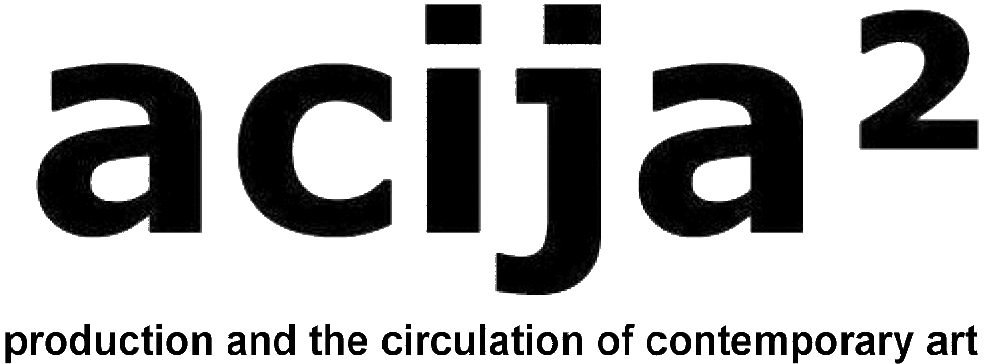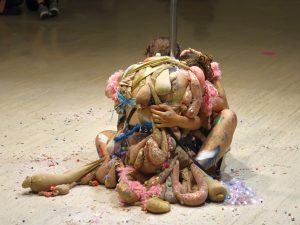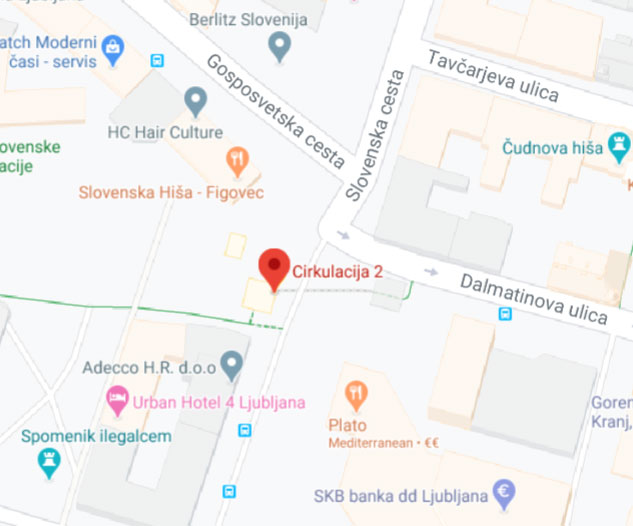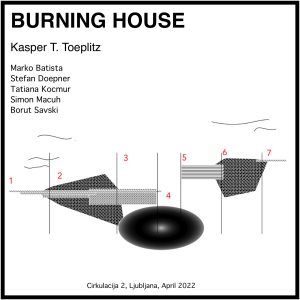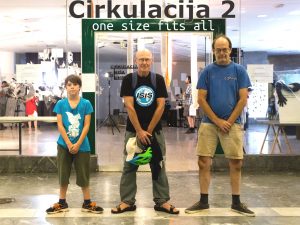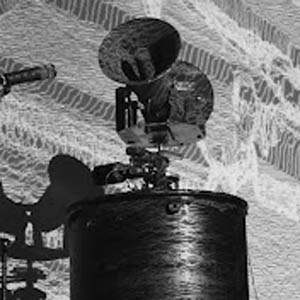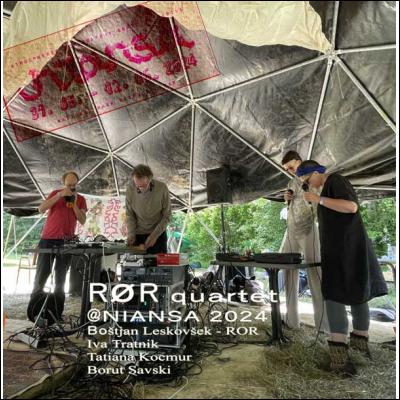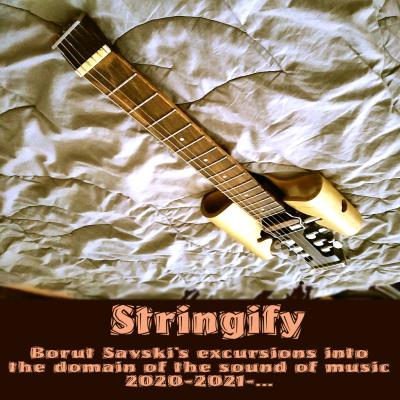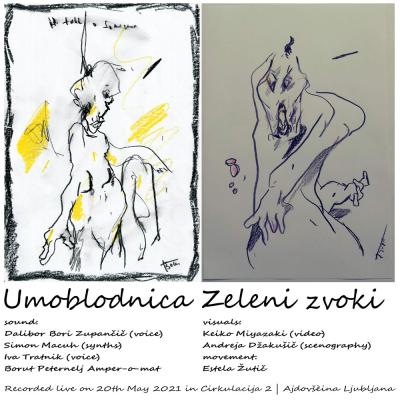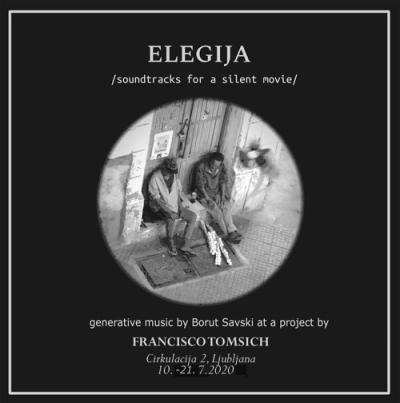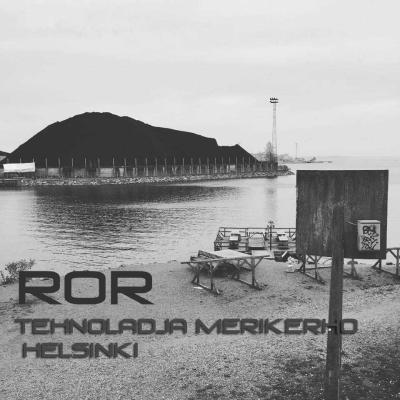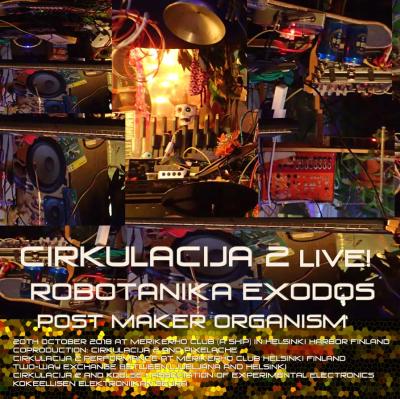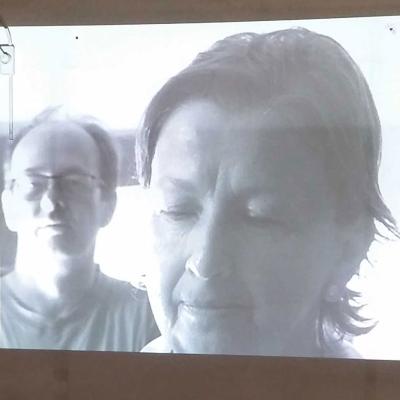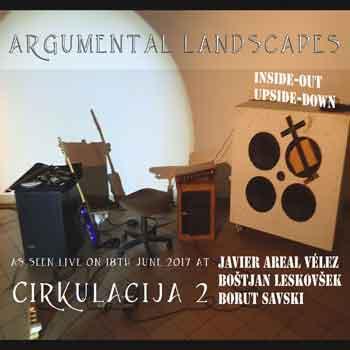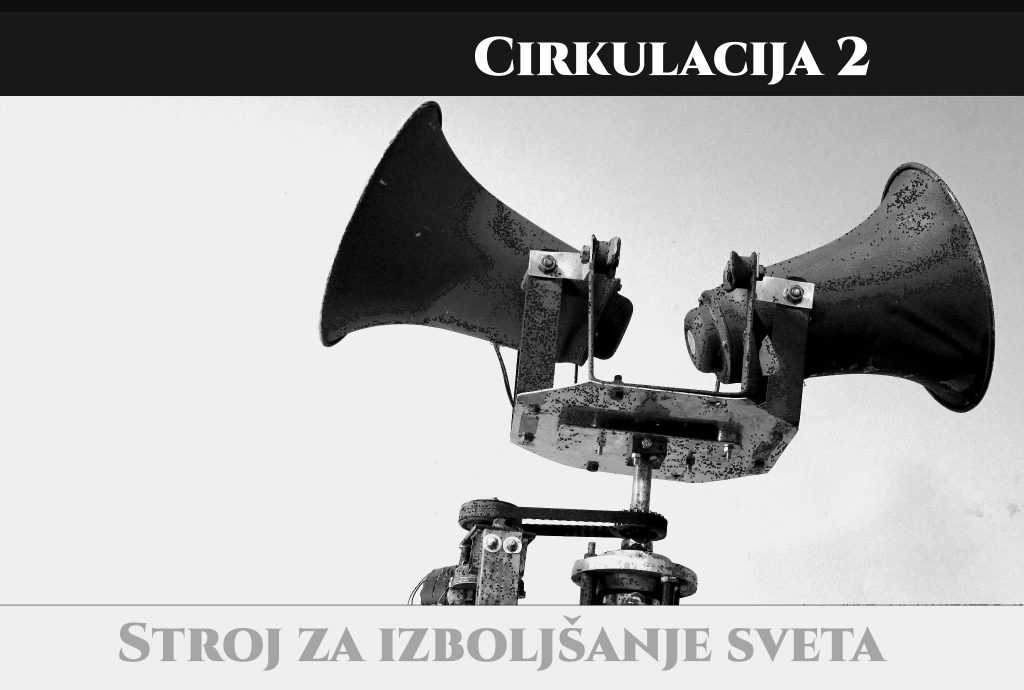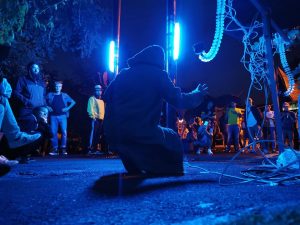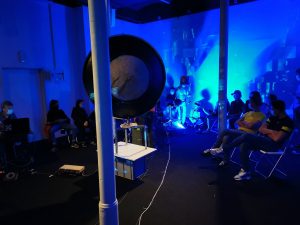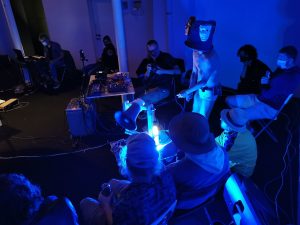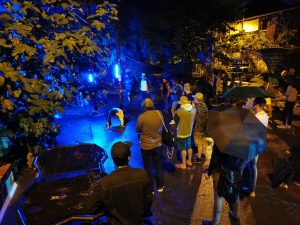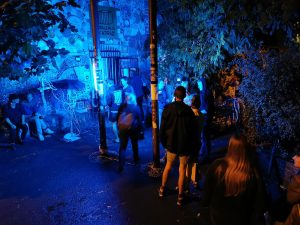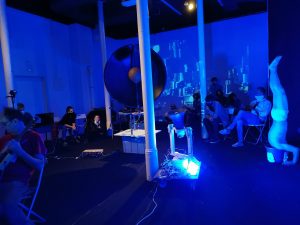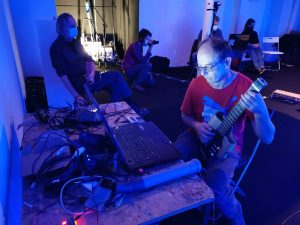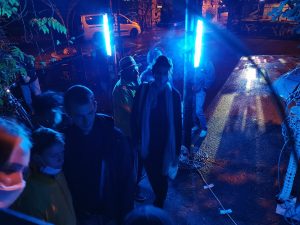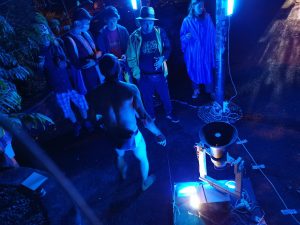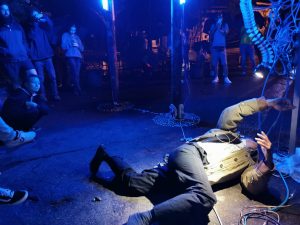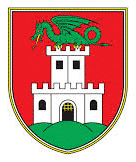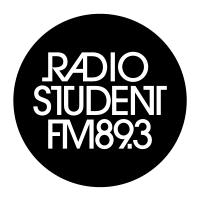Stroj za izboljšanje sveta | weltverbesserungmaschine
Published on July 31st, 2020Prvi iz serije “Stroj za izboljšanje sveta” je potekal od 4. do 6. avgusta 2020 /s poudarkom na koncertnem performensu v torek, 4. avgusta/ v | pri galeriji Alkatraz /Metelkova Mesto/ in dodatna dneva videomilozvočne instalacijske situacije v notranjosti galerije Alkatraz.
Cirkulacija 2 /v razširjeni obliki/ – Uvod v Stroj za izboljšanje sveta
Boštjan Leskovšek, Ryuzo Fukuhara, Stefan Doepner, Milan Kristl, Borut Savski
torek 4. avgusta 2020 ob 21.00: Koncertni performens pred Alkatrazom
sreda 5. avgusta – četrtek 6. avgusta 2020: Instalacija samodejnih kaotičnosti | samoorganizacij v galeriji Alkatraz
Produkcija KUD Mreža & koprodukcija Cirkulacija 2
Stroj za izboljšanje sveta (->”weltverbesserungmachine” /-> “world improvement machine”) je prispodoba razsvetljenske želje po visoki organiziranosti države (-> najprej imperija, potem nacionalne države, pa demokracije/ socialne države) – gladko tekoči stroj. Pogosto se jo povezuje s civilizacijsko stopnjo družbe. V preteklosti je stroj pogosto skrenil s poti, zašel v različne ekstreme – vedno pa je sugeriral pomikanje od slabšega k boljšemu. Novo je dobro / naprej je dobro / nazaj je slabo /en korak nazaj – da potem dva koraka naprej (->Tito)
 Vektor razvoja je bil še do nedavnega jasen. Razpad jasnih svetovnih ideologij in prikritost smisla kopičenja resursov kot dominantne ideologije je povzročila trenutek, ko vektor naključno niha med vsemi skrajnostmi: levo = desno + desno = levo ter doli = gori + gori = doli. Prav = laž + konzument = kralj.
Vektor razvoja je bil še do nedavnega jasen. Razpad jasnih svetovnih ideologij in prikritost smisla kopičenja resursov kot dominantne ideologije je povzročila trenutek, ko vektor naključno niha med vsemi skrajnostmi: levo = desno + desno = levo ter doli = gori + gori = doli. Prav = laž + konzument = kralj.
Zvočno-glasbeno-vizualni uvodni nastop bo uvedel principe, ki jih Cirkulacija 2 razvija: nehierarhičnost, neglasbo kot vzporednost glasbenih tokov z naključnimi srečanji kot malimi kristalizacijami, improvizacijo kot (ne)glasbeno komunikacijo. V nadaljevanju bodo ekstrakti postavljeni v galeriji Alkatraz kot fizični in medijski artefakti v obliki samopoganjanih dinamik / mehanizmov (= soft & hard).
 Imperialno-sodobnodržavni-civilizacijski stroj so v 17. in 18. stoletju začeli uvajati vsi (razsvetljenski, absolutni ) monarhi v Evropi. Pri nas je bila takšna reformatorka avstrijska cesarica Marija Terezija, ki je kot taka vstopila v ljudske pregovore. Na prvem mestu je bila vojska, takoj na drugem pa državni aparat za zajem davkov. Nato so sledile različne standardizacije / univerzalizacije – štetje in registracija prebivalstva / principi vključevanja v mehanizem Stroja.
Imperialno-sodobnodržavni-civilizacijski stroj so v 17. in 18. stoletju začeli uvajati vsi (razsvetljenski, absolutni ) monarhi v Evropi. Pri nas je bila takšna reformatorka avstrijska cesarica Marija Terezija, ki je kot taka vstopila v ljudske pregovore. Na prvem mestu je bila vojska, takoj na drugem pa državni aparat za zajem davkov. Nato so sledile različne standardizacije / univerzalizacije – štetje in registracija prebivalstva / principi vključevanja v mehanizem Stroja.
https://sl.wikipedia.org/wiki/Marija_Terezija
https://revijazarja.si/clanek/ljudje/5a60662b88843/slovencem-je-dala-solo-krompir-in-cepljenje
V nadaljevanju pa je Stroj vključil tudi demokratizacijske libertarne principe meščanskih revolucij, kar je pomenilo tudi bistveno vlogo liberalnih mehanizmov (-> predvsem princip svobode v obliki svobode nastopanja na trgu / blagovne menjave).
Stroj je potreboval vedno nove sveže sile, zato se je prek vključevanja meritarnih principov povečala vertikalna mobilnost – sposobni posameznik se je lahko povzpel do neslutenih družbenih višin. Pogoj za to je bilo izobraževanje in univerze – in seveda teritorialna mobilnost.
Poudarjanju vloge individualnosti vsakega kolesca se je nasproti pogosto postavil kolektivni moment zanikanja vrednosti posameznega gradnika. Socialne revolucije 19. in 20. stoletja so se pogosto naslonile tudi na dokaj nov princip nacionalnih identitet.
Vse to je Stroj zlahka vključil v svoje delovanje.
Kako pa Stroj deluje danes? Kje so vektorji? In zakaj niso jasno na vidiku?
V času covid_19 Stroj doživlja kar nekaj sunkov, ko se zdi, da naključno spreminja smer in se bo morda stabiliziral v regresiji nekega preteklega časa. Stroju je seveda vseeno. Lahko tudi obtiči v blatu. Morda pa bi bilo potrebno, da se ga od tam čimprej izvleče in usmeri v ustreznejšo smer.
Foto Laszlo Juhasz
